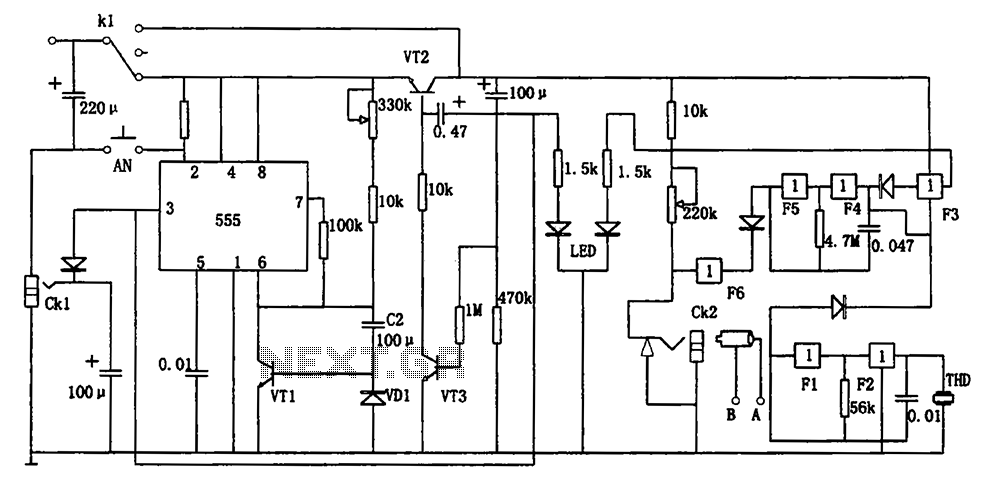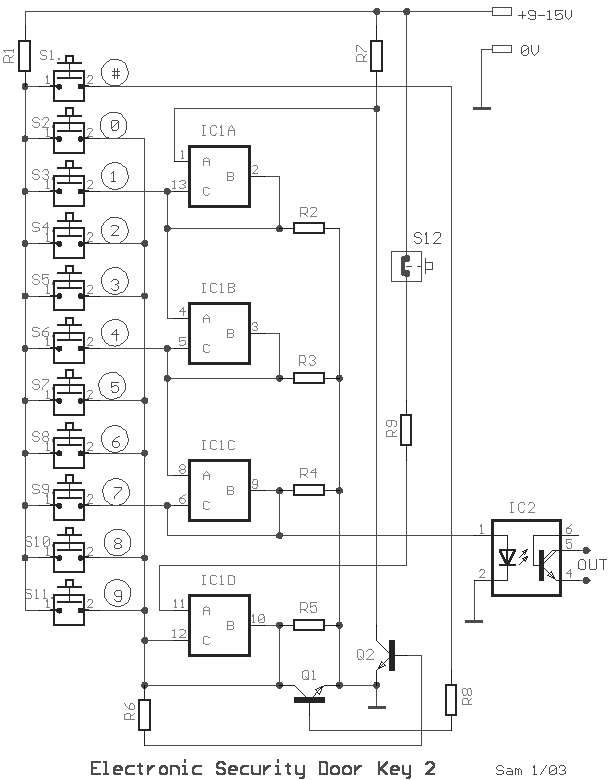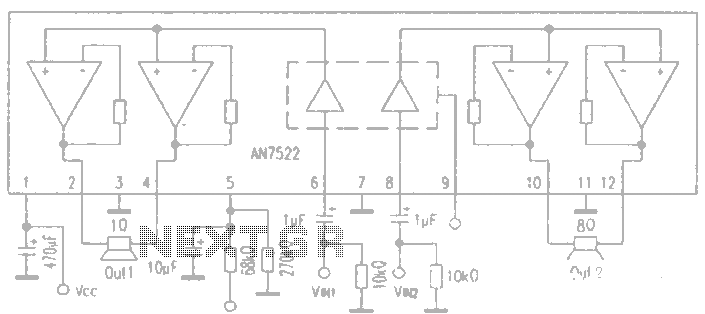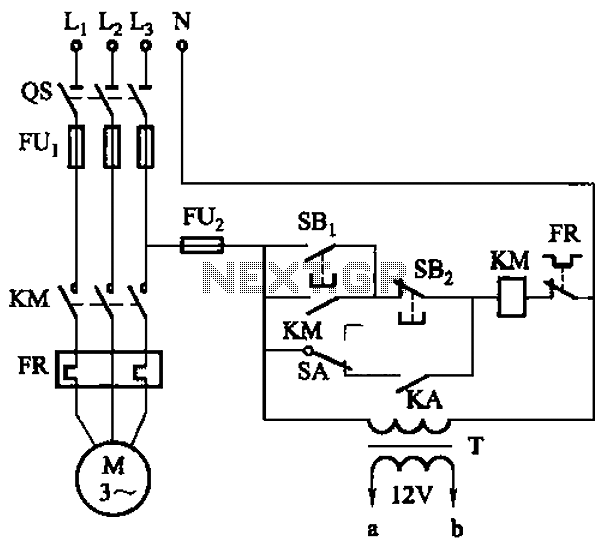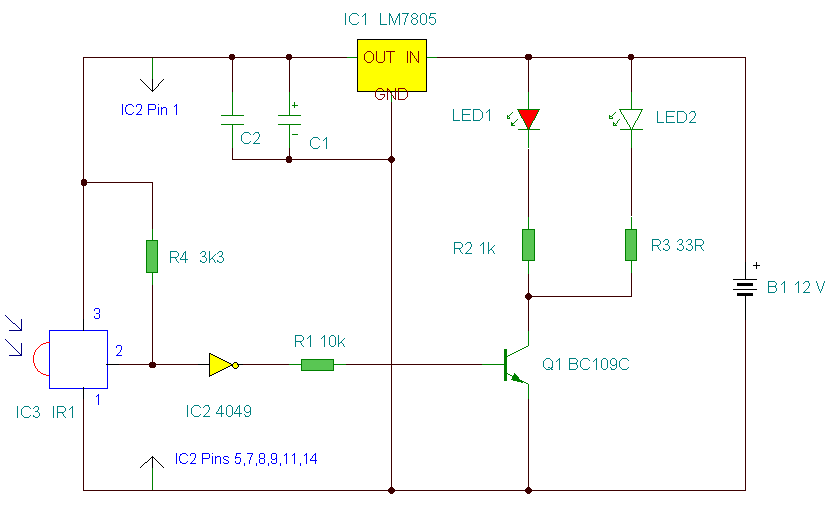
IR Infrared Detector Circuit
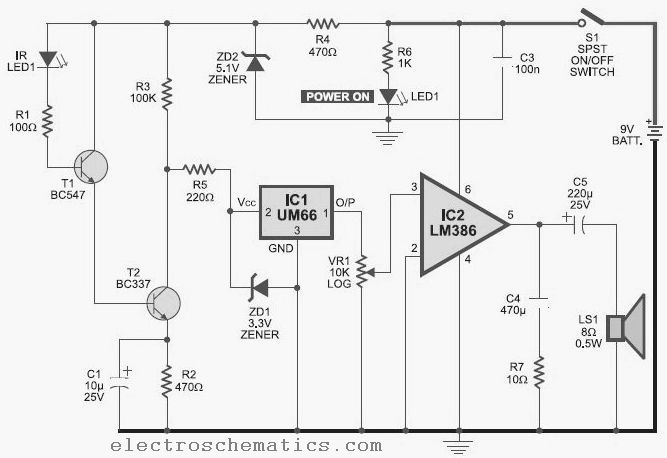
This infrared detector is capable of detecting the presence of modulated infrared signals in its vicinity from various electronic sources, such as an IR handheld remote.
The infrared detector operates by utilizing a photodetector that is sensitive to infrared light. The device is designed to respond to specific modulated frequencies, allowing it to differentiate between ambient infrared radiation and signals emitted by remote controls or other IR sources. The detector typically includes a lens system to focus incoming infrared light onto the photodetector, enhancing sensitivity and range.
The output of the infrared detector is usually a digital signal that indicates the presence or absence of the modulated infrared signal. This output can be interfaced with microcontrollers or other processing units to perform further actions, such as activating a relay, sending a notification, or triggering an alarm.
In terms of circuit design, the infrared detector may include components such as an amplifier to boost the signal from the photodetector, a bandpass filter to isolate the desired modulation frequency, and a comparator to convert the analog signal into a digital signal. Power supply considerations are also essential, as the detector must operate within specified voltage and current limits to ensure optimal performance.
Overall, the infrared detector is a versatile component widely used in various applications, including remote control systems, security devices, and automated lighting systems. Its ability to reliably detect modulated infrared signals makes it an essential part of modern electronic systems.This infrared detector can be used to detect the presence of modulated infrared signals in its vicinity from any electronic source, for instance, an IR han.. 🔗 External reference
The infrared detector operates by utilizing a photodetector that is sensitive to infrared light. The device is designed to respond to specific modulated frequencies, allowing it to differentiate between ambient infrared radiation and signals emitted by remote controls or other IR sources. The detector typically includes a lens system to focus incoming infrared light onto the photodetector, enhancing sensitivity and range.
The output of the infrared detector is usually a digital signal that indicates the presence or absence of the modulated infrared signal. This output can be interfaced with microcontrollers or other processing units to perform further actions, such as activating a relay, sending a notification, or triggering an alarm.
In terms of circuit design, the infrared detector may include components such as an amplifier to boost the signal from the photodetector, a bandpass filter to isolate the desired modulation frequency, and a comparator to convert the analog signal into a digital signal. Power supply considerations are also essential, as the detector must operate within specified voltage and current limits to ensure optimal performance.
Overall, the infrared detector is a versatile component widely used in various applications, including remote control systems, security devices, and automated lighting systems. Its ability to reliably detect modulated infrared signals makes it an essential part of modern electronic systems.This infrared detector can be used to detect the presence of modulated infrared signals in its vicinity from any electronic source, for instance, an IR han.. 🔗 External reference
